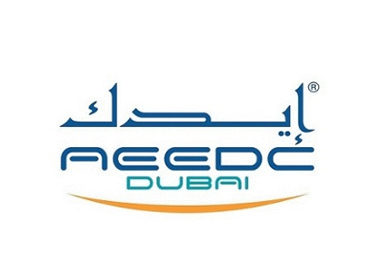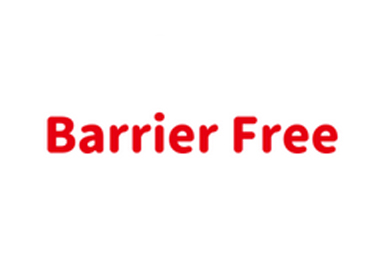



What is the role of exhibition planning
Successful exhibition activities come from successful exhibition planning. As a systematic project, exhibition planning has the following functions:
1. Strategic guidance
Planning is a kind of rational thinking to ensure that the upcoming activities in the future are carried out in an orderly manner according to the predetermined objectives. It is a process in which the planner makes decisions, plans, explores and designs various alternatives for the planning objectives. Decision makers make choices and decisions based on the planning scheme, so as to ensure the procedural and scientific decision-making.
The strategic guiding function means that exhibition planning can provide the overall guiding ideology for the execution of exhibition activities. Take exhibition planning as an example, such as exhibition venue, exhibition scale, exhibition theme and time arrangement, exhibition brand, main partners (industry), etc., in the exhibition planning plan should be put forward in advance.
2. Implementation planning function
Implementation planning function means that exhibition planning can provide specific action plans for exhibition activities. Generally speaking, after the exhibition planning plan is passed, appropriate adjustments can be made in the specific implementation process according to the situation, but the overall idea and requirements of the operation of the exhibition activities will not change, and the planning plan is the main basis for the implementation of the exhibition activities.
3. Process restriction
Process restriction means that exhibition planning can arrange and restrict the process of exhibition activities. Especially the large-scale exhibition activities, the work involved in the process of the implementation of the exhibition activities, must be in strict accordance with the plan to carry out the work, so as to ensure the smooth progress of the exhibition activities.
4. Effect control
Planning will generally conduct advanced research on the long-term or essential problems of the development of exhibition activities and the future change and development of the exhibition environment, predict the development trend, and think about future development issues, so as to improve the initiative of the exhibition event planning body to adapt to the future and create the future.
The effect control function refers to the effect that the exhibition planning can predict and supervise the exhibition project activities. Whether a certain exhibition activity achieves the expected effect in the execution process can be clearly seen by comparing the relevant requirements of the planning program. On the one hand, exhibition planning can control the final completion effect of exhibition activities, on the other hand, it can also test the feasibility and rationality of the planning program itself.
5. Standardize operation
Before planning or planning, exhibition planners use scientific planning operation procedures to conceive and design the plan, provide wisdom for the generation of the plan, make the plan feasible, and make the budget reliable. The function of normative operation means that the exhibition planning can make the exhibition operation more scientific, reasonable and standardized.
Two, exhibition design planning program basic process of seven steps
1. Reasonable division of labor
The planning supervisor is responsible for coordinating and communicating the work of the planning personnel in the whole team, and is fully responsible for the formulation and revision of the planning plan; The planner is responsible for drawing up the exhibition project plan; The copywriter is responsible for writing all kinds of exhibition copywriting, including exhibition common documents, exhibition social documents, exhibition promotion documents, exhibition contracts, etc. Art designers are responsible for various types of visual image design, such as advertising design, display space design; Market researchers are responsible for conducting market research and preparing market research reports; Media liaison staff for media promotion.
2. Market research and analysis
Market research and analysis includes five aspects of industrial environment, target market, policies and regulations, similar exhibitions, and own resources, and draws an analysis report.
3. Develop an action plan
(1) Formulating an overall plan is an important prerequisite for the smooth development of exhibition projects. The plan must pay attention to the selection of the right time, the right place, and the reasonable collocation of the two.
(2) The exhibition planning plan should be specific, and a specific measure should be formed for operation. It is necessary to clarify the following contents: the objectives of the exhibition project, the environment to achieve the objectives of the exhibition project, the elements of the marketing strategy of the exhibition project, the development of the exhibition-related activities, the effect and evaluation of the exhibition planning program, and the additional conditions for the implementation of the exhibition planning program.
(3) Designing an action schedule is also essential. The action schedule of the exhibition project must be carefully designed, the production of the planning program and the implementation of the program must not be delayed, and the beginning and end of each step should have time regulations and restrictions to ensure that the implementation of the program can proceed smoothly, otherwise it will seriously affect the success of the exhibition.
4. Create a budget
The development of a sound exhibition project budget plan generally includes venue costs, administrative costs (including the salary of the company's administrative personnel and administrative office costs, etc.), publicity and promotion costs, exhibition, investment fees, related activity funds and other possible costs.
5. Determine the revenue source of exhibition projects
Exhibition revenue sources are generally conference fees or booth fee income, ticket income and corporate sponsorship income.
6. Write exhibition planning plan
The final result of the planning is sorted into written materials, that is, the planning book, also known as the plan, the main content of which includes the status quo or background introduction, analysis, objectives, strategies, tactics or action plans, benefit prediction, control and emergency measures, the content of each part can vary according to the specific requirements and the degree of detail. It can cover the contents such as feasibility study reports, project letters of intent, project proposals, advertising plans, brochures, etc., all the planning documents surrounding a certain event before, during and after the exhibition.
7. Evaluation and correction
Hold a summary meeting in time to evaluate and revise the plan. At the same time, do a good job in the aftermath of public relations work, and be ready to solve the exhibition accident for the record.